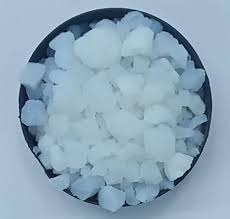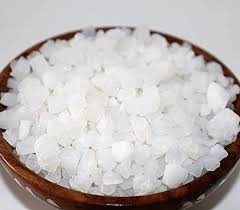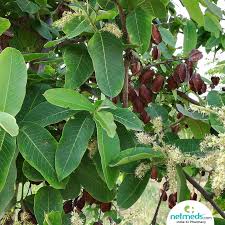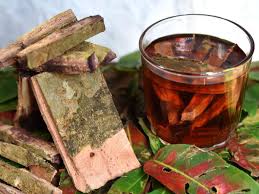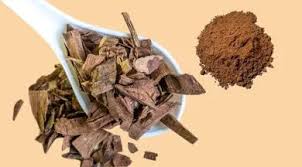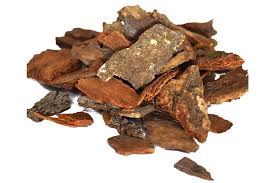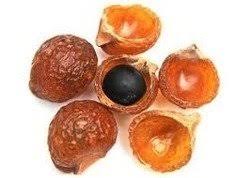
Amla for Hair Dyeing: Natural Alternatives to Chemicals
With growing awareness about the harmful effects of synthetic hair dyes, many people are turning to natural alternatives to color and care for their hair. One of the most trusted and effective ingredients in this realm is Amla, or Indian Gooseberry. Known for its incredible hair-rejuvenating properties in Ayurveda, Amla not only strengthens and nourishes the scalp but also acts as a natural hair darkener and enhancer of natural shine.
For centuries, Amla has been used as a key ingredient in herbal hair dye formulations, especially when combined with other natural herbs like henna, indigo, and bhringraj. In this article, we will explore how Amla can be used as a natural alternative to chemical hair dyes, its benefits, and how you can incorporate it into your routine for naturally colored, healthy, and lustrous hair.
Long Description
- Why Choose Natural Alternatives for Hair Dyeing
Commercial hair dyes often contain harsh chemicals like:
Ammonia – Damages hair shaft and causes dryness
PPD (Paraphenylenediamine) – A common allergen
Hydrogen peroxide – Strips natural hair pigment
Resorcinol and sulfates – Irritate scalp and harm follicles
Repeated use of such chemicals may lead to:
Premature greying
Hair fall and breakage
Allergic reactions
Scalp sensitivity
Natural alternatives like Amla provide a safer, effective, and holistic solution that not only color the hair subtly but also improve hair health from the roots.
- The Ayurvedic Power of Amla for Hair
In Ayurveda, Amla is a Rasayana herb — a rejuvenating tonic that supports the health of hair (keshya).
Key Ayurvedic benefits of Amla for hair:
Balances Pitta dosha, which is responsible for premature greying
Enhances melanin production, which contributes to natural hair pigmentation
Strengthens the hair roots and promotes thicker, darker hair
Prevents dandruff, split ends, and scalp irritation
Amla is a cornerstone in Ayurvedic formulations like Triphala, Brahmi-Amla oil, and Herbal Hair Lepas.
- How Amla Works as a Natural Hair Dye
Amla by itself does not produce a strong dye color like henna or indigo, but it enhances natural dark tones, adds depth to hair color, and acts as a hair color enhancer and toner.
Here’s how it works:
Tannin content in Amla binds with hair proteins and creates a mild darkening effect
Helps fix and deepen the color of henna and indigo
Over time, it restores lost pigment and enhances the natural black or dark brown color
Reduces appearance of greys by nourishing the hair follicles
When used regularly, Amla helps maintain natural black shine and delays greying without the use of synthetic chemicals.
- Benefits of Using Amla for Hair Dyeing and Coloring
✅ Naturally darkens the hair over time
✅ Reduces and prevents premature greying
✅ Nourishes scalp and hair follicles
✅ Adds shine, softness, and thickness
✅ Safe for sensitive scalps and allergic individuals
✅ Works well with other herbs like henna and indigo for deeper color
✅ Strengthens hair roots and prevents fall during dyeing process - How to Use Amla for Natural Hair Coloring
You can use Amla in various forms—powder, oil, fresh paste, or juice—depending on your hair needs and convenience.
A. Amla Powder Hair Pack for Color Enhancement
Ingredients:
2 tbsp Amla powder
1 tbsp Bhringraj powder (optional)
Water or black tea to make paste
Method:
Mix to form a thick paste
Apply on clean, dry hair from roots to tips
Leave for 30–60 minutes
Rinse with plain water (no shampoo)
Benefits: Slight darkening, shine, and scalp nourishment
B. Amla + Henna + Indigo for Dark Hair Coloring
This is a popular Ayurvedic combination for covering greys and getting natural black or deep brown tones.
Step 1: Henna Application
Mix 100g henna with Amla powder (30g), lemon juice, and tea water
Rest the mixture for 6–8 hours
Apply and leave for 2–3 hours
Rinse with water (no shampoo)
Step 2: Indigo Application (next day)
Mix 100g indigo with Amla powder (20g) and warm water
Apply to hair for 1.5–2 hours
Rinse and let hair settle for 24–48 hours for full color development
Benefits:
Deep natural hair color
Long-lasting grey coverage
Strengthened hair with reduced breakage
C. Amla Oil Hair Massage
Ingredients:
Amla oil (homemade or organic store-bought)
How to use:
Warm the oil and apply to scalp
Massage gently for 10–15 minutes
Leave overnight or at least 2 hours
Wash with herbal shampoo
Frequency: 2–3 times a week
Benefits:
Nourishes hair roots
Prevents greying
Adds shine and smoothness
D. Amla Juice Rinse
How to prepare:
Mix 1 part fresh Amla juice with 3 parts water
Use as a final rinse after shampooing
Benefits:
Adds luster
Tones hair naturally
Keeps scalp cool and clean
- Ideal Usage Frequency for Amla as Hair Dye
Amla Form Purpose Recommended Frequency
Amla Powder Pack Mild coloring & shine 1–2 times per week
Amla with Henna/Indigo Grey coverage, deep color Every 3–4 weeks
Amla Oil Massage Nourishment & darkening 2–3 times per week
Amla Juice Rinse Shine and tone enhancement After every wash
Consistency is key—results build up naturally over time.
- Who Should Use Amla for Hair Dyeing?
Individuals with sensitive scalp or allergies to chemical dyes
People experiencing premature greying or hair thinning
Those wanting natural, subtle darkening without side effects
Herbal and Ayurveda enthusiasts
Pregnant or nursing women (with doctor consultation)
Anyone aiming for chemical-free haircare lifestyle
- Important Tips and Precautions
Always use organic, chemical-free Amla powder
Avoid applying on oiled hair before dyeing for better color absorption
Do a patch test before trying new combinations
After Amla-based coloring, avoid shampooing immediately—wait 48 hours for color to settle
Store Amla products in air-tight containers, away from moisture
- DIY Amla Hair Dyeing Recipe: Natural Hair Mask
Ingredients:
2 tbsp Amla powder
1 tbsp Brahmi powder
1 tbsp Bhringraj powder
1 tbsp Aloe vera gel
Tea decoction (as needed for paste)
Method:
Mix all into a smooth paste
Apply to scalp and hair
Leave for 1 hour
Wash with lukewarm water
Benefits:
Enhances color, thickness, and shine
Reduces dandruff and breakage
Conclusion
Using Amla for hair dyeing is more than just a natural way to color your hair—it’s a holistic approach to hair health and beauty. Unlike synthetic hair dyes that offer instant results but long-term damage, Amla works gradually and deeply, revitalizing your hair follicles, darkening your natural shade, and preventing further greying.
With regular use, Amla can transform dull, damaged, or greying hair into shiny, strong, and naturally dark tresses. Whether used alone or in combination with herbs like Henna and Indigo, it remains one of nature’s best solutions for hair coloring and care.
At Dirghaanshi, we celebrate the power of nature’s healing herbs. Embrace Amla as your go-to solution for safe, chemical-free, and radiant hair color.


